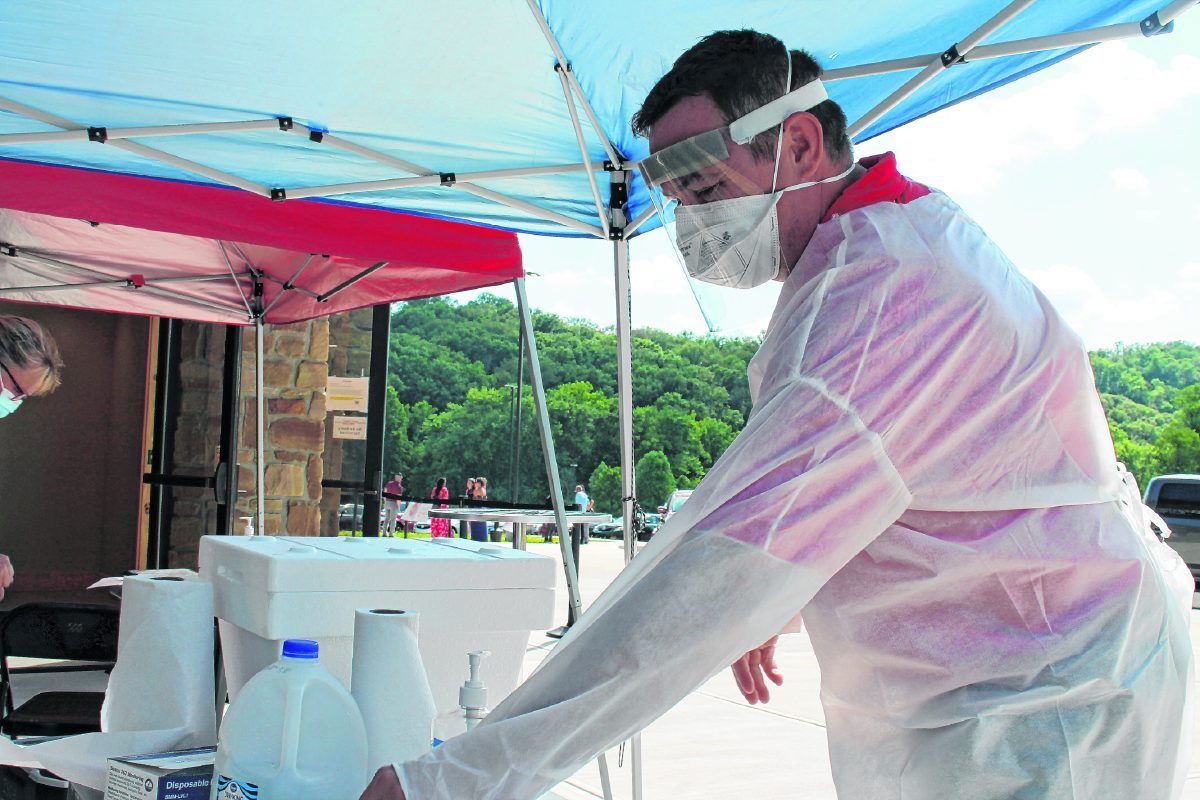
After experiencing an increase in positive COVID-19 cases, Brown County seems to be following the state trend of emerging from the surge caused by the Delta variant of the virus.
The amount of positive cases began to increase throughout the state toward the end of July.
Soon Brown County also reported an increase in positive cases following months where less than 10 positive cases were reported weekly. Brown County’s COVID spread was moved up to yellow status on the COVID-19 spread map located on the Indiana State Department of Health’s website. It dropped to blue, the lowest level, the following week.
The status is based on new cases and test positivity rates each week, according to the ISDH.
Brown County remained at blue for about six weeks before being bumped back up to yellow on Aug. 4. At that time, much of the state looked like it did back in October in terms of yellow and orange county colors based on positive test results and growth in case numbers per 100,000 residents.
Around that time, Brown County’s COVID numbers were rising at a faster pace in the week leading up to Aug. 11 than what was seen since January.
On Aug. 25, the county officially entered the red status on the COVID-19 spread map, which is the highest level of four.
At that time the county picked up 51 new COVID cases in a week — the highest gain since the beginning of January.
The county remained in the red status until Sept. 15 when the status was dropped to orange. Counties must remain at a metric for two weeks before moving down to a lower advisory level.
On Sept. 30, the county was moved back down to yellow where it remained as of last week’s update from ISDH. A week later on Oct. 7 Brown County reported 23 new cases in one week, which was the lowest number of positive cases that had been reported since early August.
Oct. 6 was the first day the county had not reported a single new positive case in over a month. Sept. 30 was also the first day the county did not have any new vaccinations reported.
Even with lower numbers, local health officials continue to encourage residents to take precautions to prevent the spread.
“Recently we have been seeing a decrease in cases reported to Brown County,” Brown County Emergency Health Preparedness Coordinator Corey Frost.
“Keeping that in mind, it is still important to get vaccinated and follow all the CDC (Centers for Disease Control) guideline that we all have heard since the beginning of the pandemic.”
From Sept. 20 to Oct. 1, the Brown County Health Department administered 134 tests and 187 vaccines, but Frost said the majority of the vaccines were booster shots.
ISDH announced in September that booster doses of the Pfizer COVID-19 vaccine are available to eligible Hoosiers following a federal authorization of the additional dose.
The single booster dose can be given at least six months after completion of the second dose of the Pfizer vaccine. The booster is only available to those who have received the Pfizer vaccine.
The CDC recommends the following people should receive a booster dose: Anyone 65 and older and residents of long-term care facilities; individuals ages 50 to 64 with underlying medical conditions that put them at high risk of severe COVID-19.
The following people may receive a booster dose based on individual benefits and risk: Individuals ages 18 to 49 with underlying medical conditions; individuals ages 18 to 64 who are at high risk of COVID-19 exposure and transmission because of an occupational or institutional risk.
As colder weather looms around the corner and gatherings move indoors, Frost said the vaccine is the “most important tool in the fight against a more severe course of illness and spread.”

